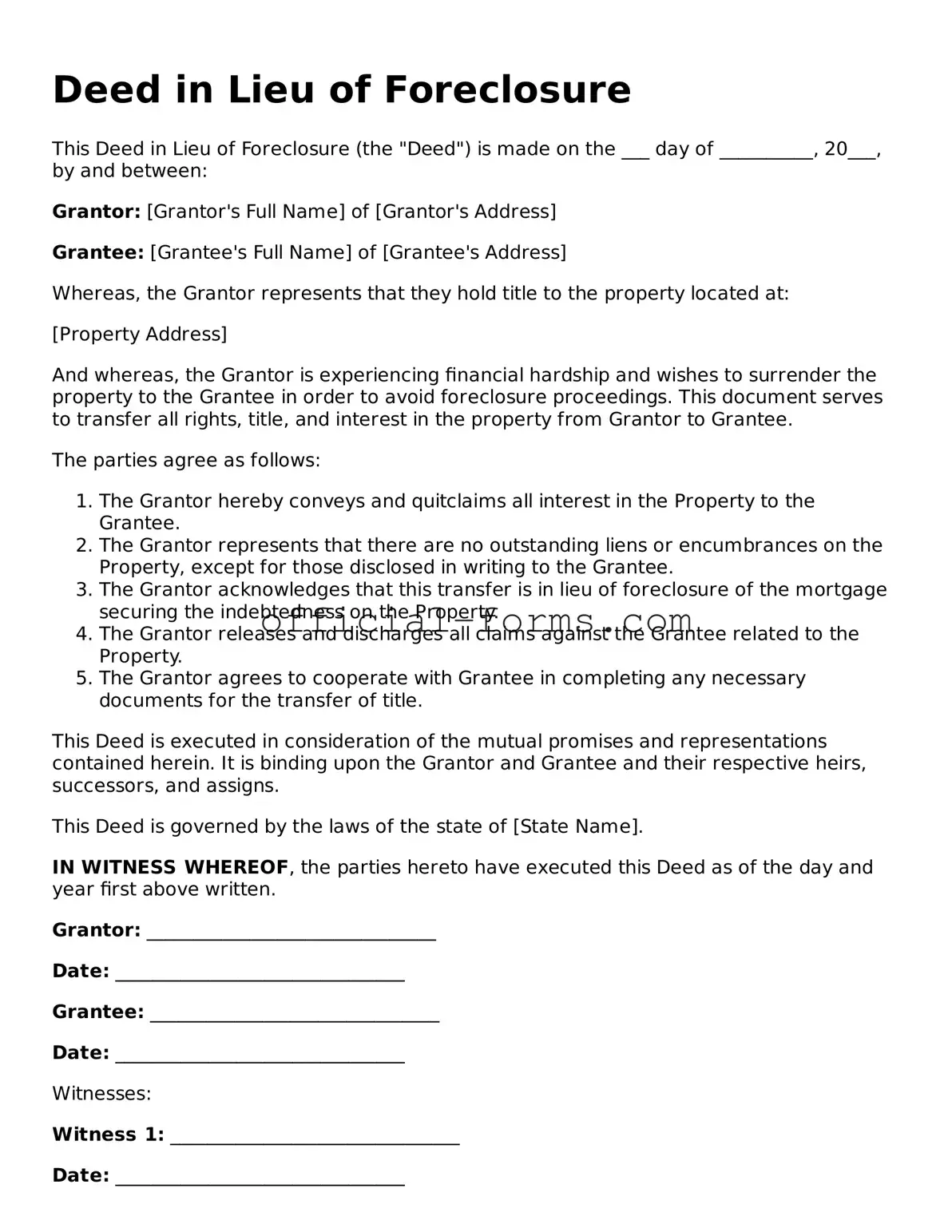When filling out a Deed in Lieu of Foreclosure form, individuals often make critical mistakes that can complicate the process. One common error is failing to provide accurate property information. This includes the correct legal description of the property and any associated parcel numbers. Inaccuracies can lead to delays or even rejection of the deed.
Another frequent mistake is neglecting to obtain the necessary signatures. All parties involved, including spouses or co-owners, must sign the document. Omitting a signature can render the deed invalid, causing further issues down the line. It’s essential to verify that everyone who has an interest in the property is included.
Additionally, many people overlook the importance of reviewing the terms outlined in the deed. Understanding what rights are being relinquished is crucial. Without careful consideration, individuals may unintentionally agree to unfavorable conditions, such as waiving the right to pursue any claims against the lender.
People also often fail to consult with a legal professional before submitting the form. While it may seem straightforward, the implications of a Deed in Lieu of Foreclosure can be significant. A legal expert can provide guidance, ensuring that all aspects of the form are completed correctly and that the individual's interests are protected.
Finally, a lack of communication with the lender can lead to misunderstandings. Some individuals assume that submitting the deed will automatically resolve their mortgage obligations. However, it’s vital to confirm with the lender that they accept the deed and understand the implications. Clear communication can prevent future complications and ensure a smoother transition.
